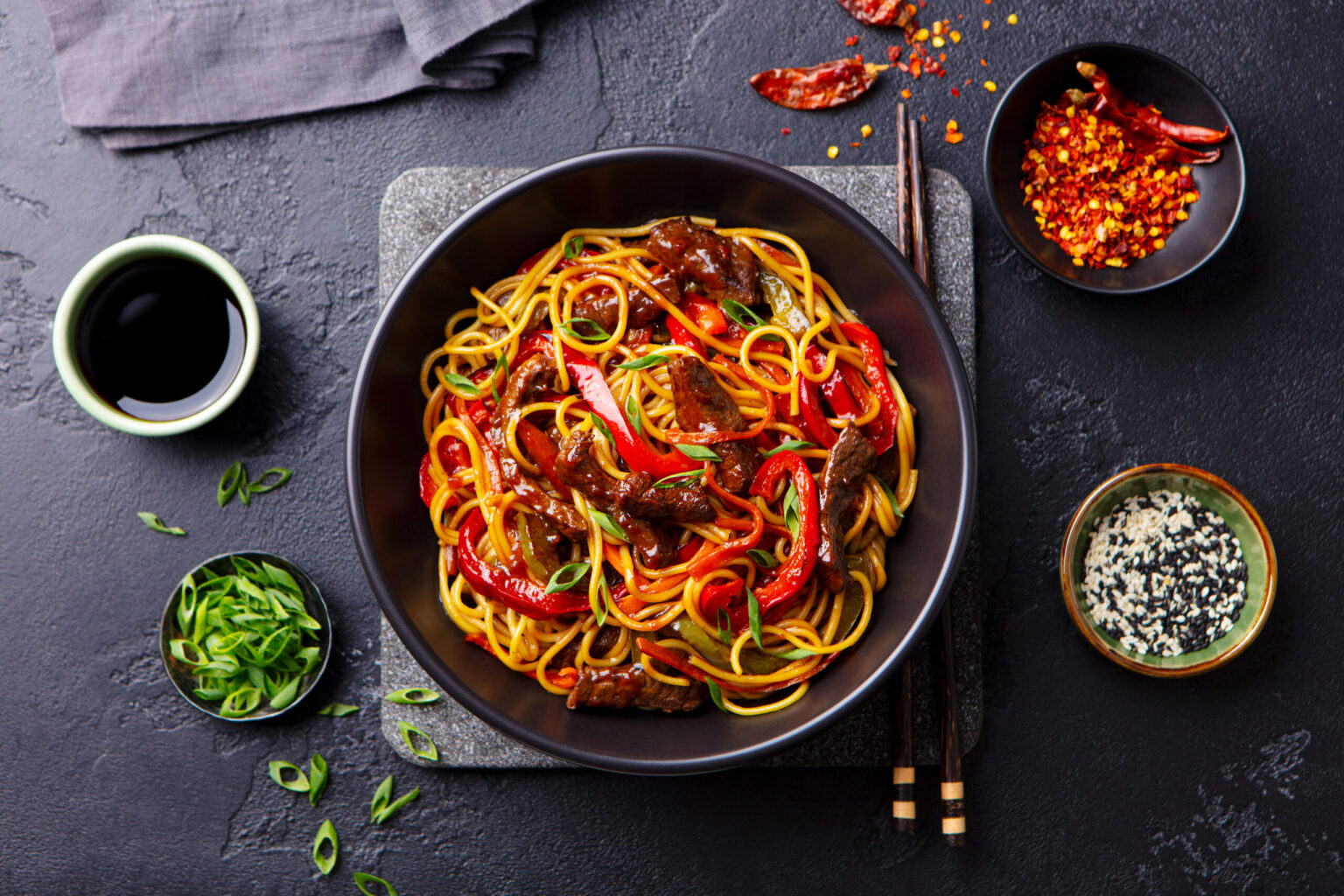You’re probably somewhat familiar with Japanese junk foods, but Japanese cuisine has a whole lot more to offer. So, udon vs soba: which one is for you?
Udon: Historical Origins
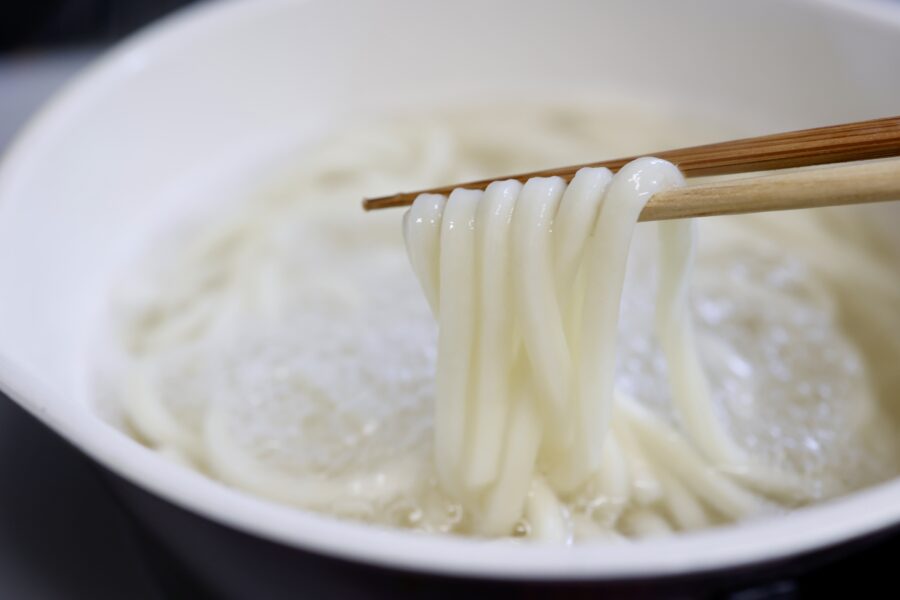
Udon noodles are a well-known staple of Japanese cuisine, but did you know that they (probably) originated in China? There’s lots of different theories, but that one’s popular.
According to that theory, udon noodles were first brought to Japan sometime between the 7th and 9th centuries. They’ve since become a Japanese staple.
Since then, udon has spread to different parts of Asia and the Pacific. Both Korea and the Philippines have their own unique spin on it.
Soba: Historical Origins
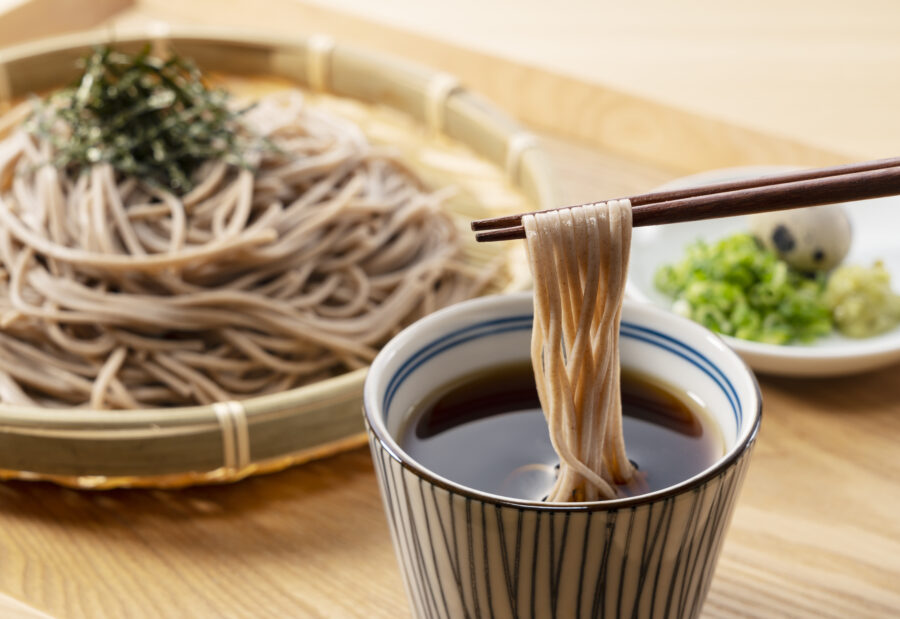
The first iteration of soba noodles has been traced back to the 13th century. However, the dish became more developed in the 17th and 18th centuries.
This was when people started using more modern sauces and seasonings. It’s also when soba noodle eateries started popping up. These restaurants were close to modern-day ones.
Though it can be served hot or cold, soba has been served in warm broth since the beginning. At the time, it was made of miso or water.
Noodle Festival Celebrations
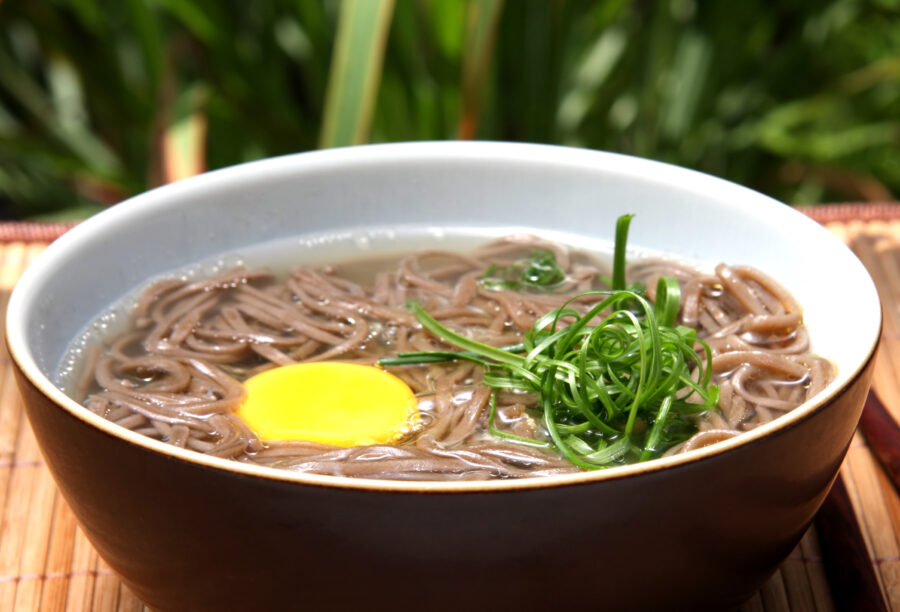
There are lots of festivals all around the world honoring different Japanese noodles. Of course, both soba and udon noodles are included in this.
There’s the Shinshu Mastumoto festival, which is about 20 years old, and celebrates soba noodles. There’s also Tsukimi, which are Japanese fall festivals that honor the moon.
Tsukimi festivals aren’t specifically for noodles. However, specially-made soba and udon noodle dishes are traditionally eaten during them. It differs per region, but they’re usually topped with egg.
Udon vs. Soba: Pre-Cooked Noodles
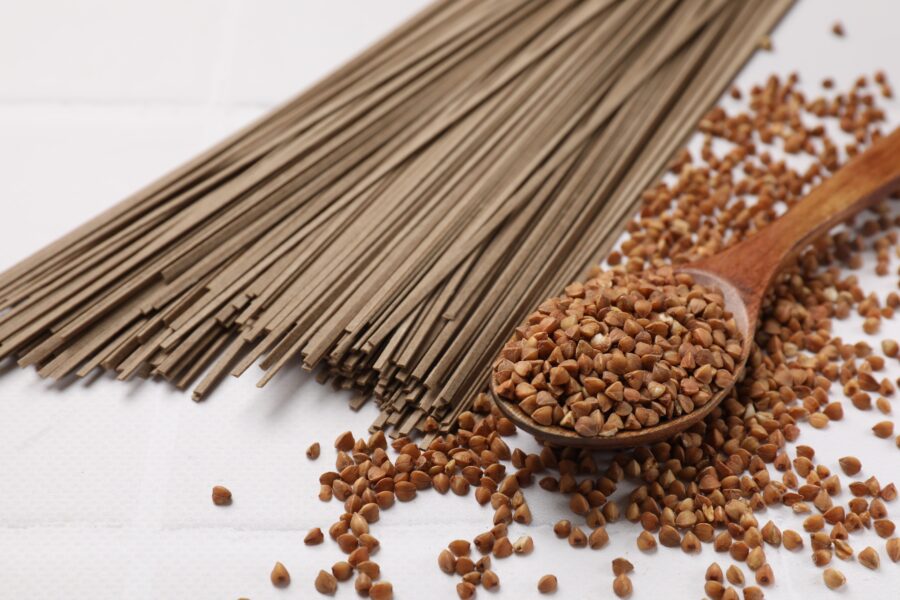
How do you cook soba and udon noodles? Do the techniques differ in any way? Well, you should always defer to the instructions on your package or box.
There’s some general guidelines, though. Pre-cooked soba noodles are boiled like spaghetti. They should be done in eight minutes. When they’re strained, soak them in cold water.
How do udon noodles, which are thicker and shorter, differ? If you’re boiling pre-cooked udon noodles, they usually only need to boil for a few minutes.
Cultural Significance
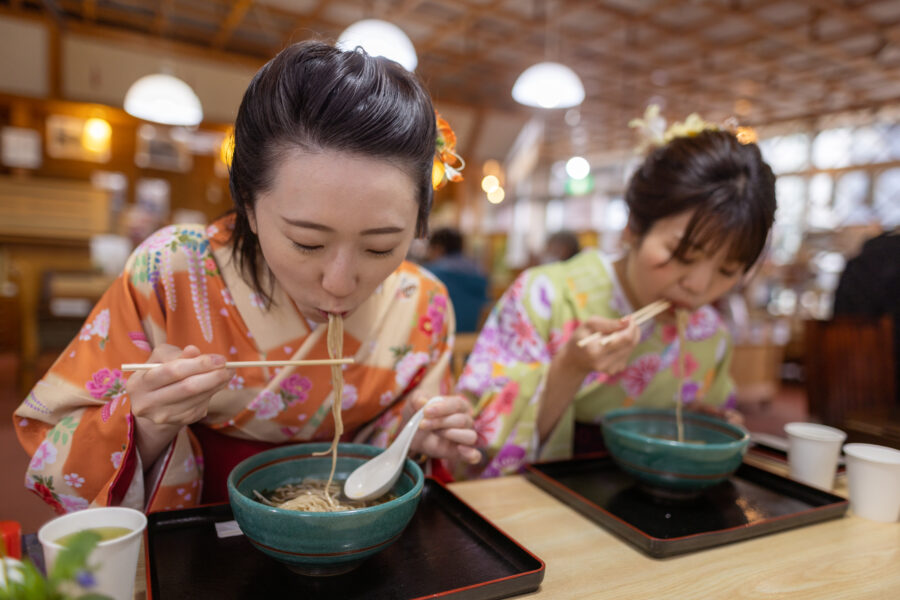
Soba noodles are often eaten on New Year’s Eve. They’re seen as a symbol of a long, prosperous life, and eaten in hope of a prosperous year.
Udon noodles are actually seen as a type of fast food. You can get them pretty much anywhere in Japan. Still, that doesn’t make them any less good!
They’re a very versatile noodle that you can make lots of creative meals out of. They’re just not seen as a delicacy in Japan.
Cooking Techniques
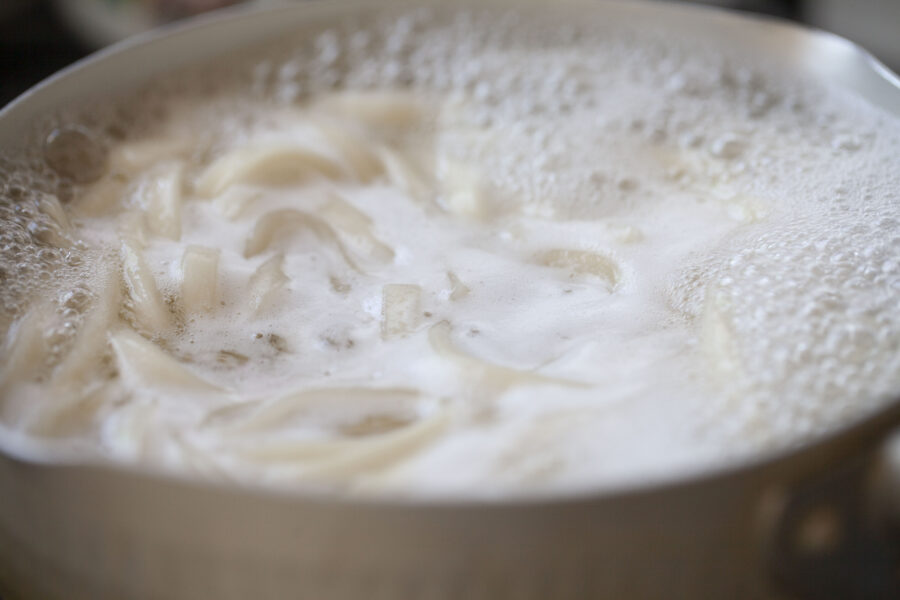
We mentioned earlier that pre-cooked udon noodles take a lot less time to boil than soba noodles. But what about making them from scratch?
Soba noodles are traditionally made from buckwheat flour, though some recipes call for the addition of wheat flour. Once you’ve made the dough, cut it into strips.
To make udon, you’ll need all-purpose flour, salt, water, and potato starch. Knead the dough with your feet — we’ll explain later. Cut the dough into thicker, shorter strips.
Serving Styles
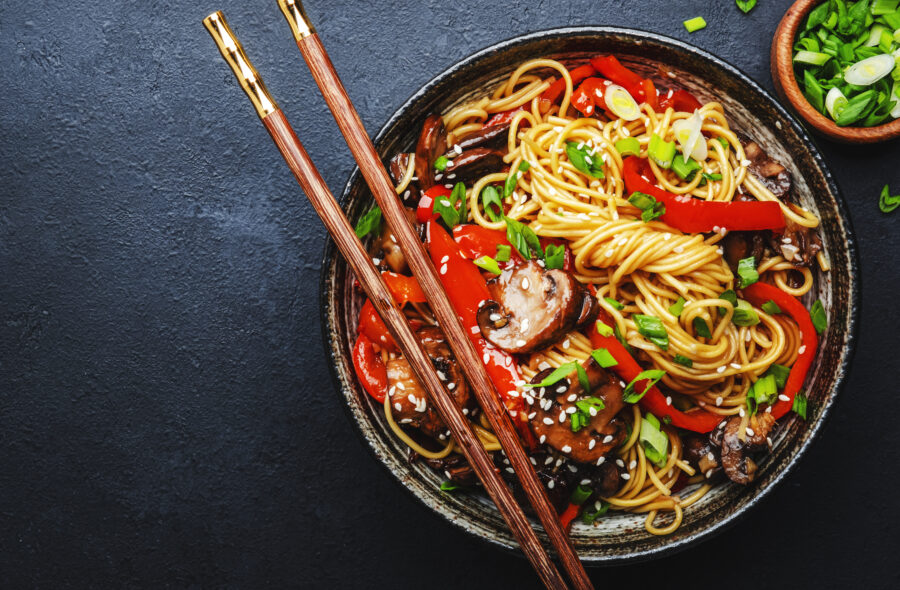
Udon and soba noodles can be served hot or cold. Much of it depends on personal preference and regional differences. We’ll dive deeper into that in a bit.
When served hot, they’re generally put into a broth and made into a soup. When cold, they’re often served alongside wasabi and soy sauce.
You can also make yaki udon or soba by stir frying the ingredients. People usually make this dish with soy and oyster sauces, alongside various veggies.
Health Benefits
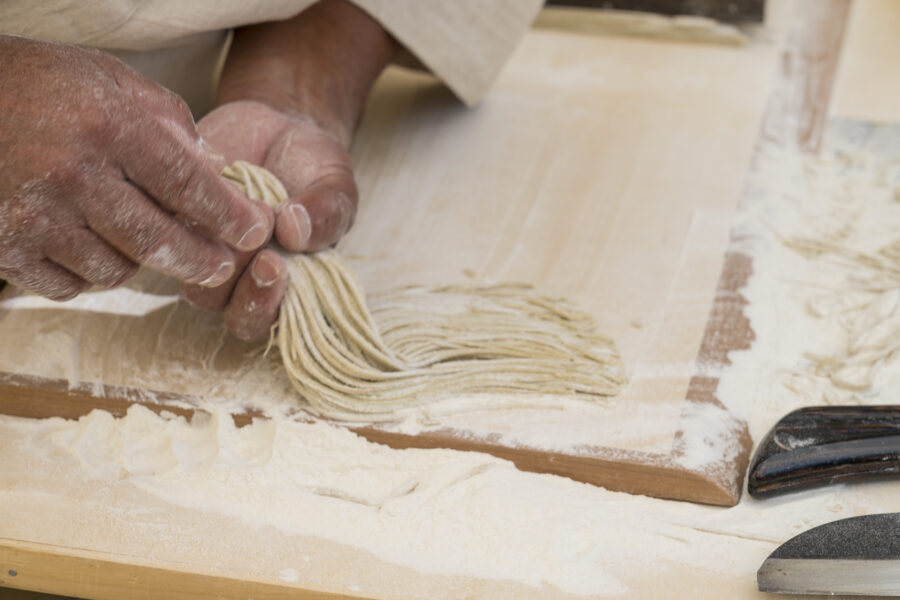
Soba noodles, being made from buckwheat, have a lot of nutritional value. They’re low-fat and gluten free (when made from only buckwheat, anyway).
Soba noodles are also high in protein, fiber, and manganese, which supports bone health. Plain udon noodles, being made from all-purpose flour, aren’t that nutritious.
Udon noodles aren’t bad for you, though. They’re more of a blank slate: it’s really just a matter of what you serve with it.
Regional Variations: Udon
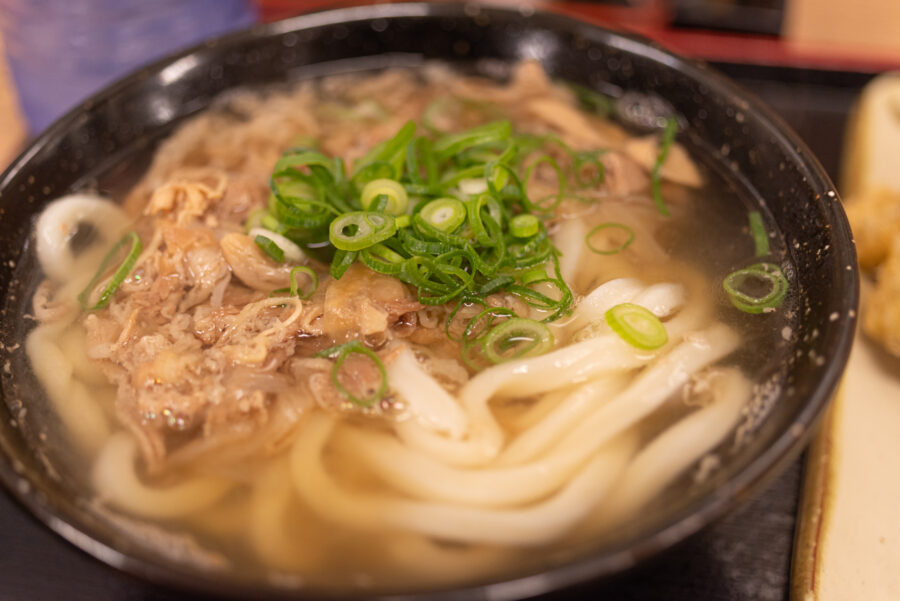
We can’t talk about udon without shouting out Kagawa prefecture, a.ka. the “Udon Prefecture.” It’s home to Sanuki udon, a regional dish that’s now eaten throughout Japan.
Apparently, the people there eat the most udon in Japan. They’re super proud of that. Kagawa isn’t the only prefecture with its own udon specialty.
One unique udon variation is Mimi udon from Tochigi prefecture. The dough isn’t cut into noodles. Instead, it’s shaped like little ears and served with soy sauce.
Regional Variations: Soba
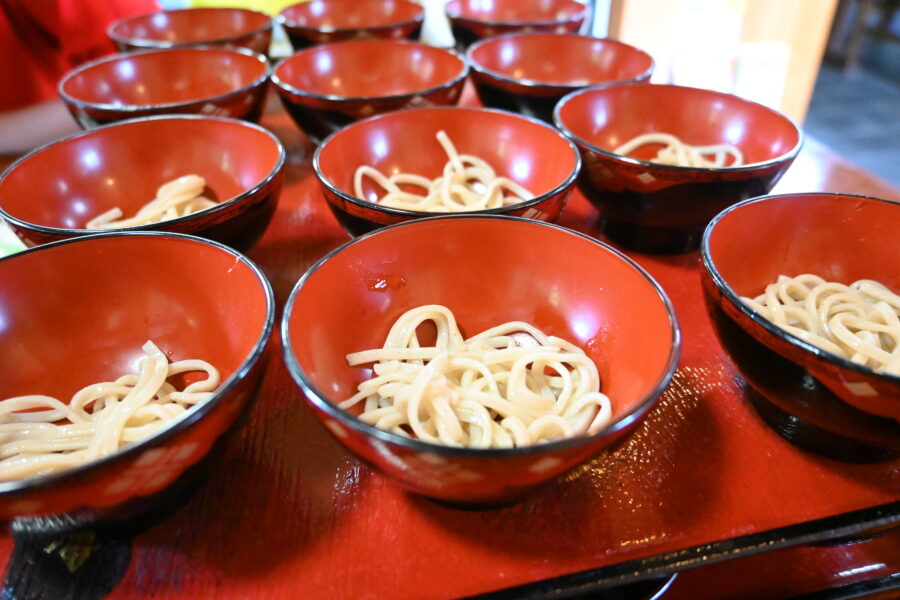
Naturally, soba also has a number of regional variations. Wanko soba from Iwate prefecture, for example, is exclusively served in small wooden bowls, in tiny portions.
In western Japan, soba noodles are served with chunks of vegetable tempura. In the east, they’re served with seafood tempura, in addition to the veggies.
Shimane prefecture serves layered soba, with emphasis on the sauces and seasonings. It can be served cold or hot, but must always be layered.
Allergen Considerations
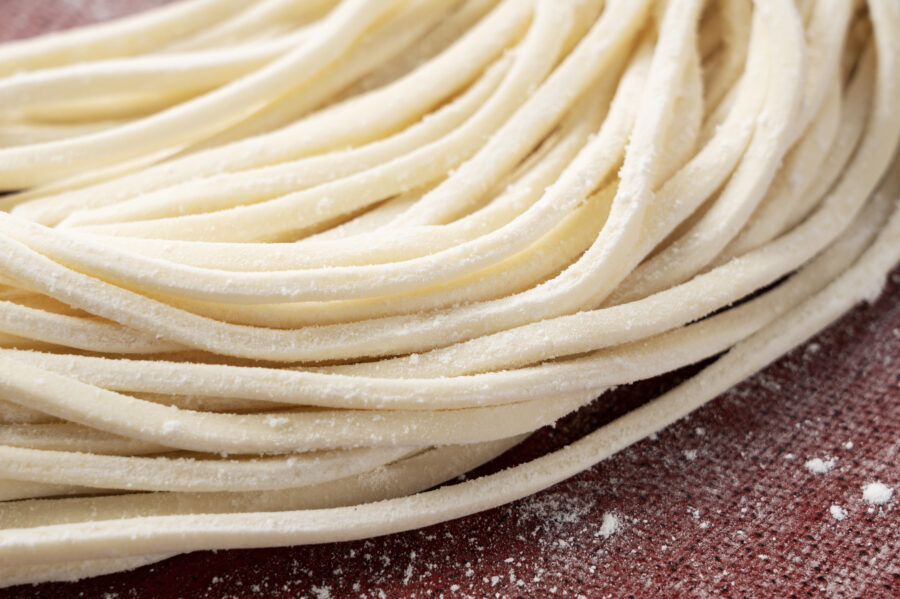
Soba noodles are actually gluten free, provided they’re made from only buckwheat. The best way to ensure that is to make the noodles yourself.
If you’d rather buy them pre-cooked, remember to double check the package. Not all soba noodles are made the same, and some variations do include wheat.
Udon pretty much always contains wheat, and may cause an allergic reaction. So, if you’re allergic to gluten, homemade soba noodles are your best bet.
Flavor Profile
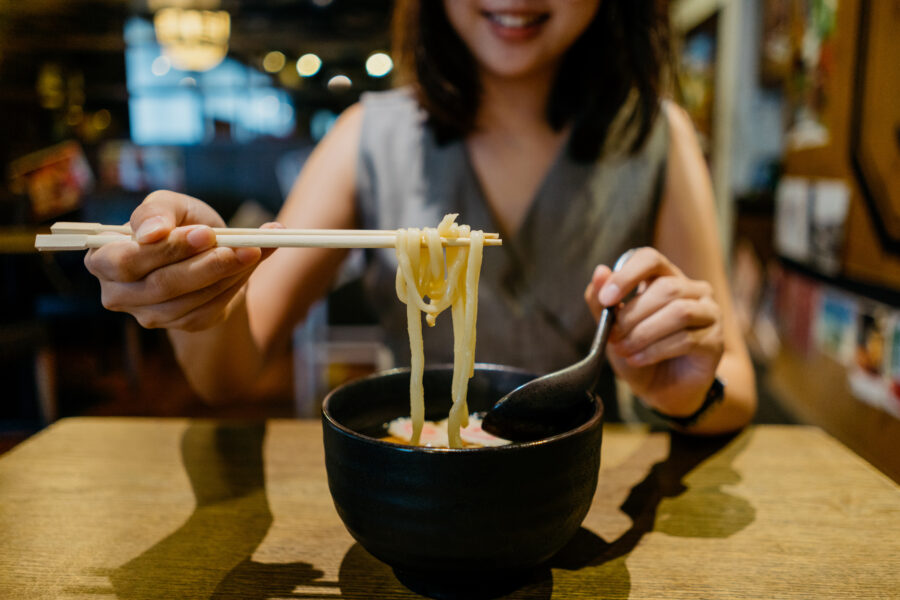
A lot depends on what you serve your noodles with. Udon noodles tend to have a light, subtle flavor, making them a good base for more creative dishes.
If you want a simple dish to expand your culinary horizons with, you’re in luck! Udon works great. If you just want simplicity, udon works for that, too.
Soba noodles, however, are more flavorful. Because of the buckwheat, they taste nutty. If you’re not a fan of nutty flavors, then soba noodles aren’t for you.
Texture and Mouthfeel
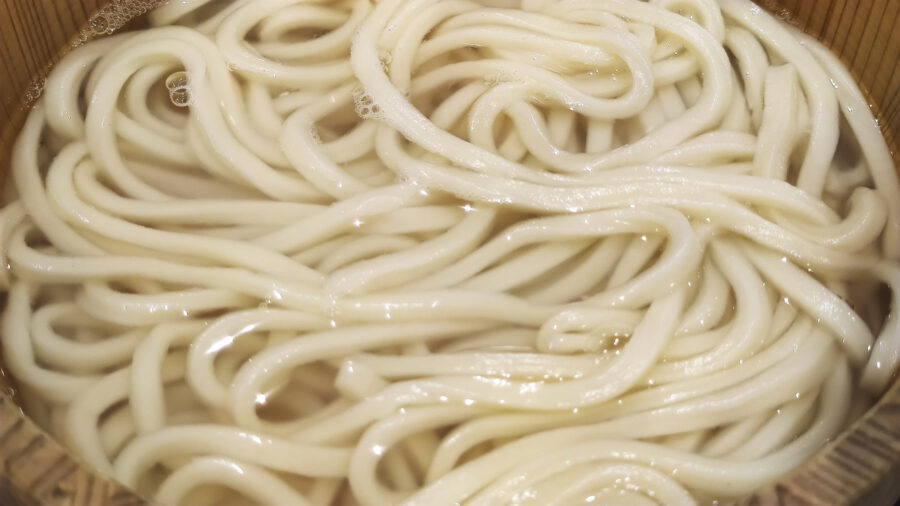
There isn’t much variation when it comes to noodle texture. However, it would be a vast overstatement to say that every type of noodle feels the same.
Udon noodles are meant to be thick, chewy, and soft. Soba noodles are also chewy, like many other noodles, though less chewy than udon.
If udon noodles were too chewy for you, then soba noodles might be more your speed. Their soft texture is comparable to spaghetti.
Versatility in Cooking
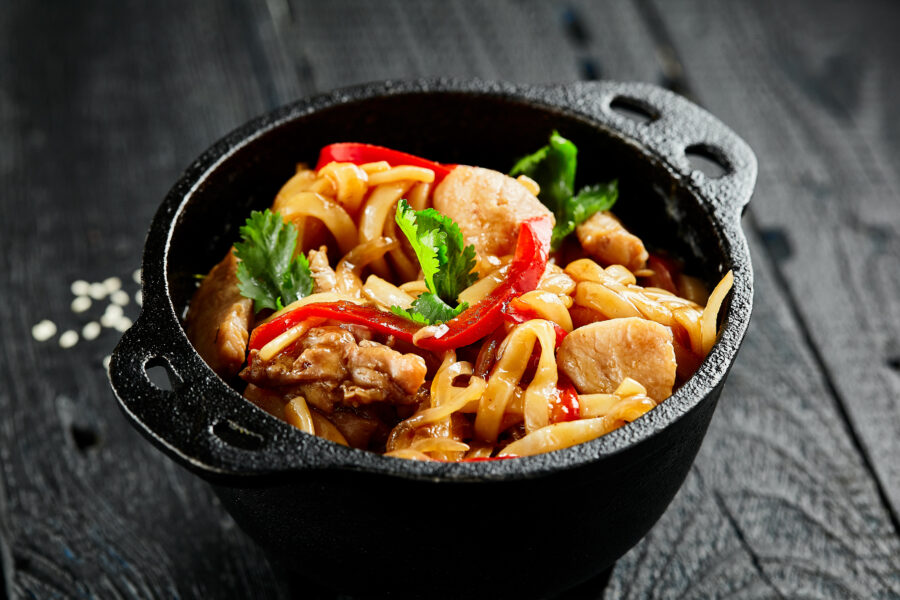
As we’ve said, udon noodles’ plaine taste make them a versatile ingredient to cook with. They taste particularly good in cold dishes, and can be incorporated into salads.
Yaki Udon is an example of just how versatile these noodles can be. With this dish, you fry the noodles after boiling for a short period.
Soba noodles are also pretty versatile, though. You can serve a bowl of soba topped with vegetable tempura, sesame oil, and your choice of meat.
Customization Options
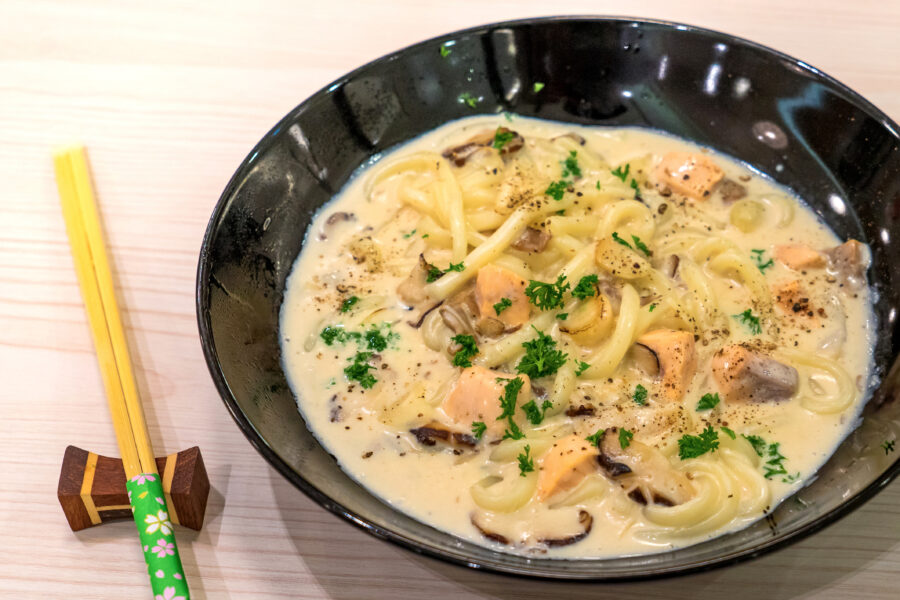
There are infinite customization options for both udon and soba noodles. Since we’ve already touched upon some traditional Japanese dishes, let’s go over more unconventional recipes.
Want to fuse Italian and Japanese cuisines? With udon noodles, you can make udon carbonara, topping the dish with parmesan cheese, pepper, and bacon.
You can take that cultural fusion even farther, if you want. If you want to get really weird with it, you could bake the noodles onto a pizza.
Noodle-Making Techniques
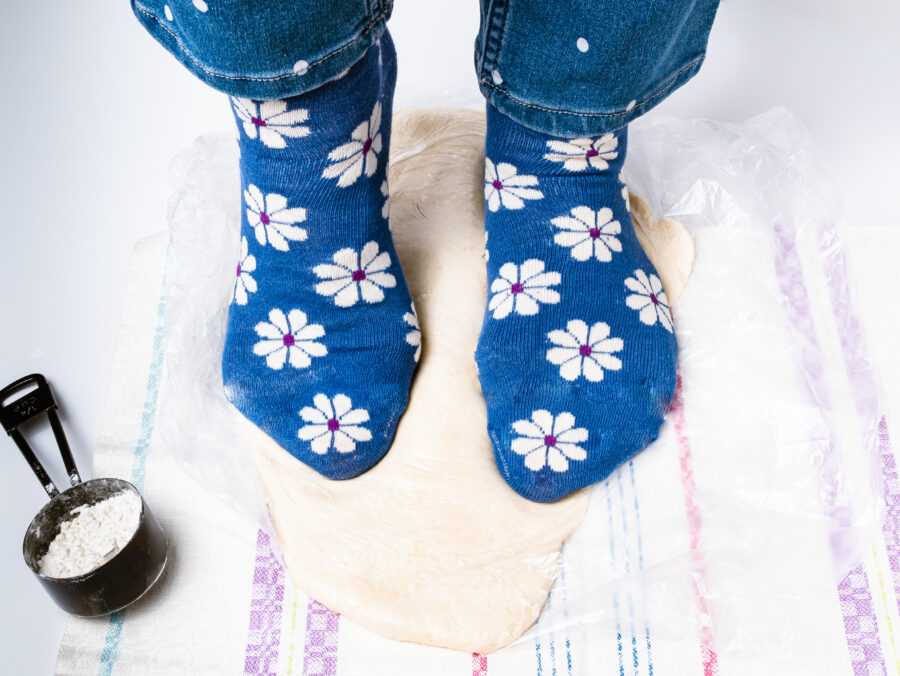
Remember how we said that people like to knead udon noodle dough with their feet? Yeah, that’s a huge thing — and it makes the noodles chewier.
It might sound weird, but this is a traditional Japanese method that they’ve been doing for hundreds of years. If it ain’t broke, don’t fix it.
A layer is put between the kneader and the dough (like a plastic bag) before they step on it. How long it takes depends on your method.
Dipping Sauce Varieties
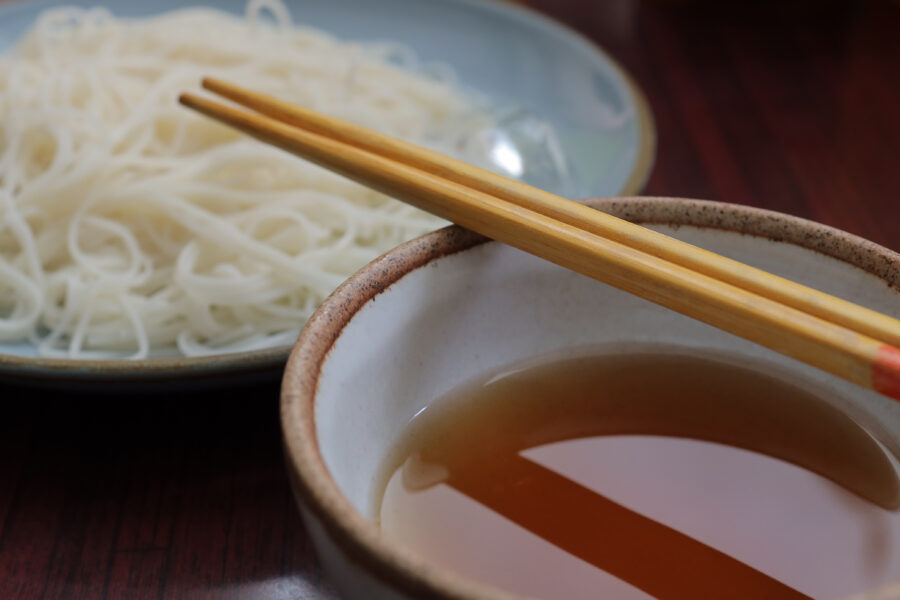
Cold noodles are often made with a dipping sauce, since they’re not served with a flavorful broth. It’s either served on the side, or drizzled on top.
There’s a common sauce used for both udon and soba. It’s called mentsuyu, and is made from three simple ingredients: chicken stock, soy sauce, and mirin.
If you don’t like mentsuyu, you can make a sesame dipping sauce that’ll taste good with either noodle. To make, mix tahini together with soy sauce and mirin.
Is Udon Just Thick Ramen?
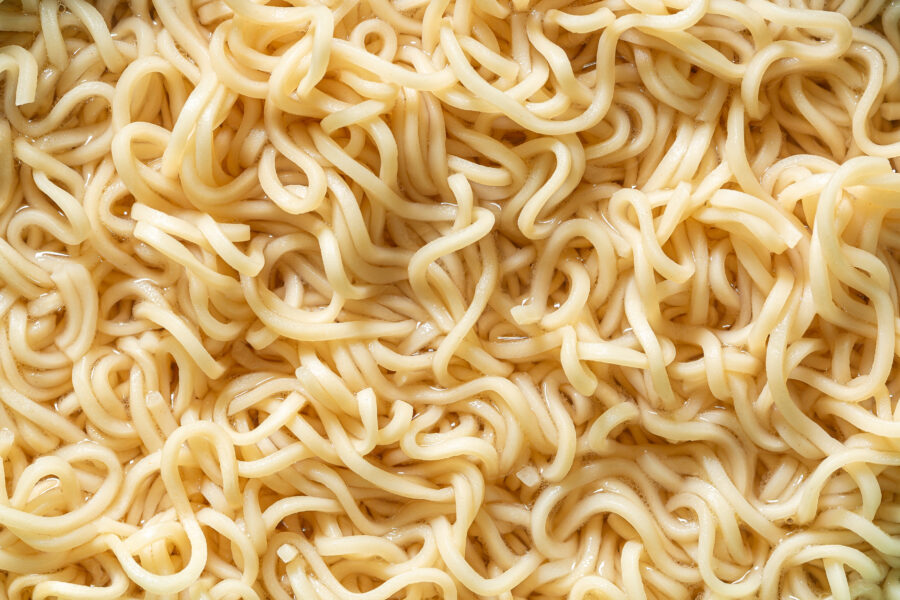
No! Ramen noodles are very thin – it’s a defining characteristic of what makes it ramen. “Thick ramen” can’t be ramen. Udon and ramen are just different noodles.
Ramen is also curly, while udon is straight. Plus, you can’t really eat ramen when it’s not in soup form, unless you like eating dry ramen bricks.
They’re also served very differently, with ramen having a bigger flavorful impact. The salty broths ramen is usually served in aren’t as light as udon broths.
Ramen vs. Udon Health Benefits

We here at So Yummy love instant ramen recipes just as much as the next food website. However, ramen isn’t exactly a healthy food.
The broths used for ramen are typically saltier and fattier, with more oils. Udon’s broths are a lot lighter than that, which makes them healthier.
It’s all in how you make it. If you make a simple ramen dish and top your udon with unhealthy ingredients, then the latter would be less healthy.
Healthiest Japanese Noodles
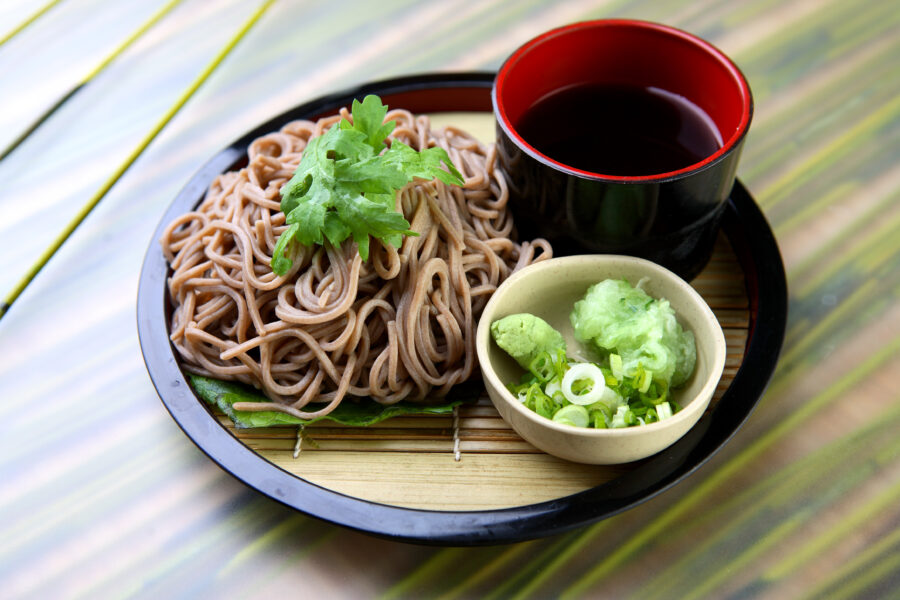
Udon isn’t unhealthy, but when it comes to the noodles themselves, soba noodles are healthiest. This is because they’re made from buckwheat, which has numerous health benefits.
However, it depends on the ratio of buckwheat to wheat flour in the dough. Remember: not every kind of soba noodles is made with 100% buckwheat.
Most noodles have more buckwheat than plain flour. There are cases where there’s more wheat flour than buckwheat, however. Make sure to check the ingredients.
Soba Noodles Are Low in Calories

Buckwheat, buckwheat, buckwheat. As it almost always is with soba noodles, it all comes down to buckwheat. Buckwheat noodles are low fat and high protein.
A cup of these noodles has about 113 calories, which is lower than other popular noodles, like spaghetti. Because of this, they’re good for weight loss.
So, they’re low fat, low calories, and high protein. Sure, they’re high in carbs, as are most noodles, but not as much as other, similar dishes.
Zero Calorie Noodle
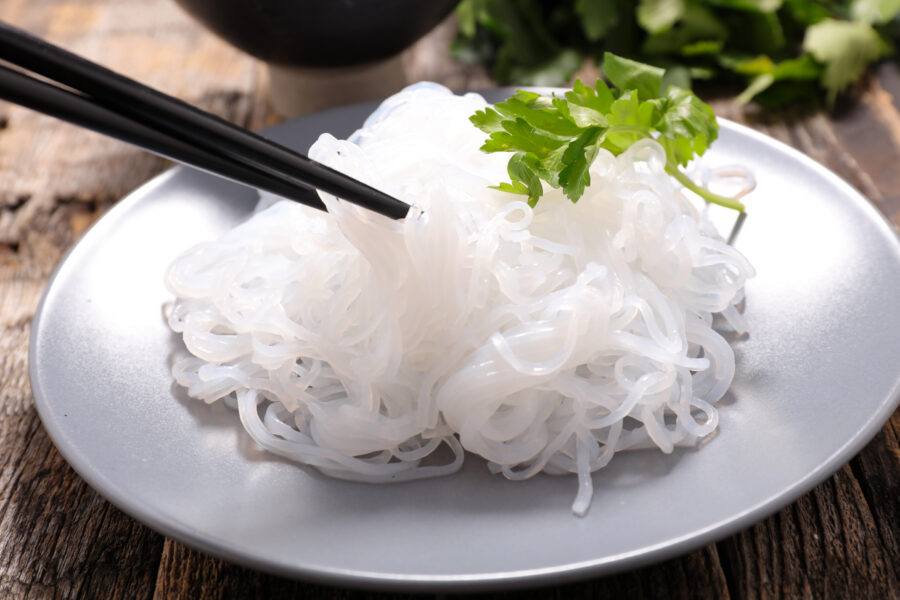
Soba noodles are known as the healthiest, but there’s another noodle in town: shirataki noodles. These are high in fiber, and, of course, super low in calories.
You might’ve seen them before: these noodles are white and translucent. They’re also vegan-friendly and gluten-free, made from konjac, a type of tuber, or tofu.
Those made from konjac are actually zero calories, while tofu shirataki noodles have a few. They’re meant to absorb the flavors of the toppings like sponges.
Slimy Soba Noodles
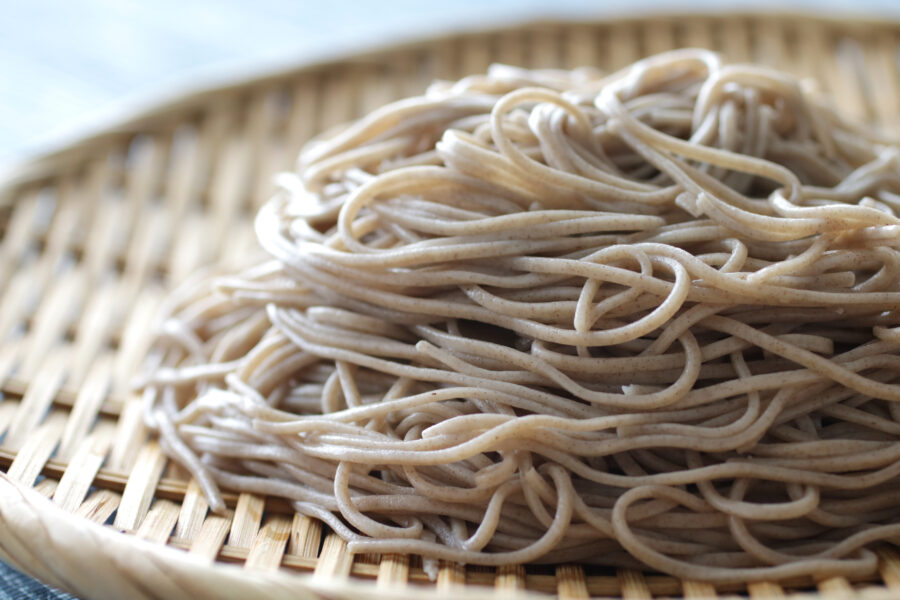
First, make sure that they’re still good to use before buying them. A slimy texture can be an indication that your noodles are going bad.
That isn’t always the case, though. It may also be an indication that you’ve overcooked them. Make sure that you’re following the package’s instructions.
You’ll need to regularly check the noodles’ texture as they boil. If they’re still slimy, you may just need to add more water to the pot.
Gummy Soba Noodles
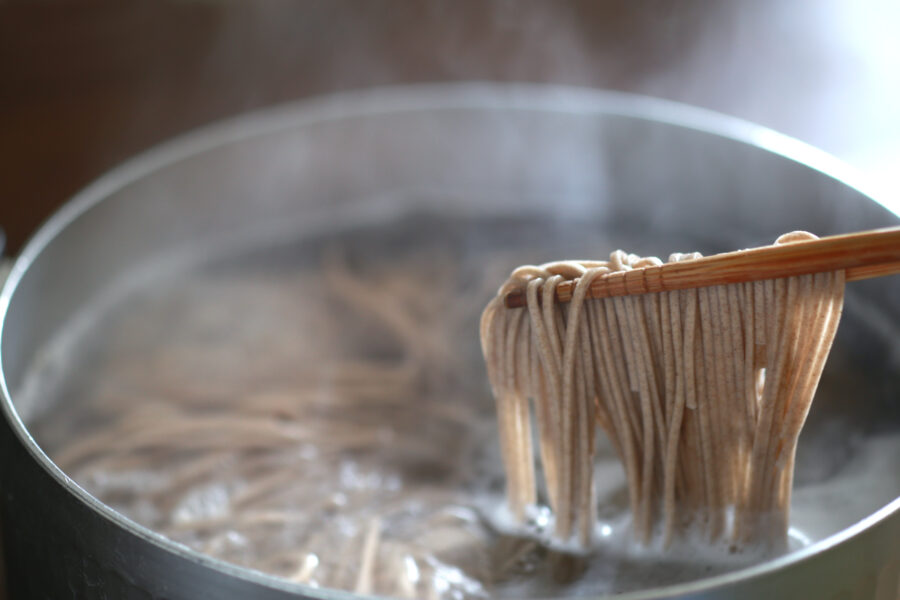
If your soba noodles are gummy, you probably overcooked them. Gumminess is another thing that can happen to overcooked soba noodles, in addition to sliminess.
That’s because there’s a key part of making soba you might’ve forgotten: dunking it in cold water. It can be easy to forget if you’re operating on autopilot.
So, why does soba require this? Well, the cold water immediately halts the cooking process, keeping the noodles separated and the texture intact.
Rinsing Soba Noodles
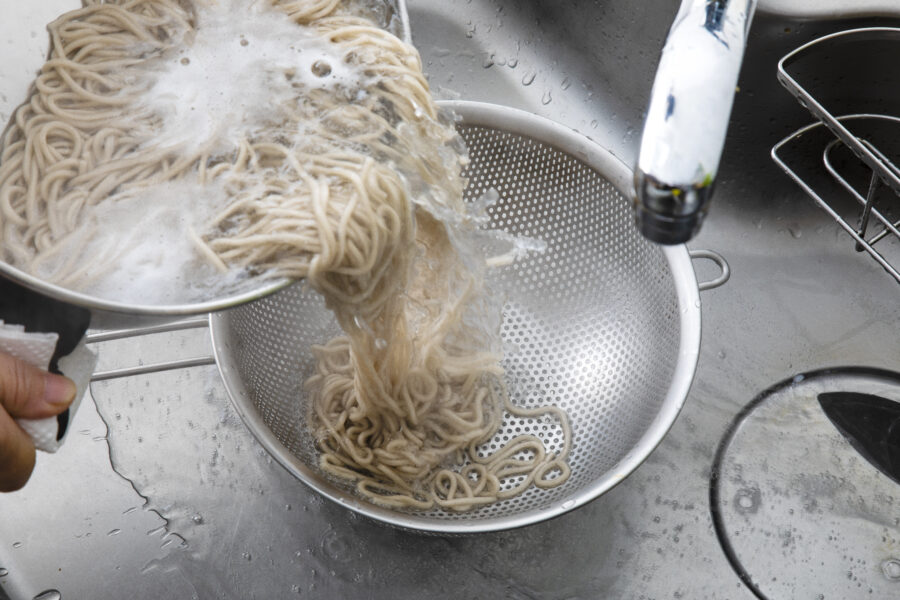
For all the reasons we mentioned above, and a little more. Soba noodles’ starch content can also make them gummy, if not properly dealt with.
Soba noodles have a particularly high amount of starch. Just like rice, rinsing them will prevent issues that arise from having too much starch in your meals.
Since you don’t need to do this with spaghetti or other types of pasta, you might forget to do it with soba. Still, don’t forget it!
Soba Noodles Expiration
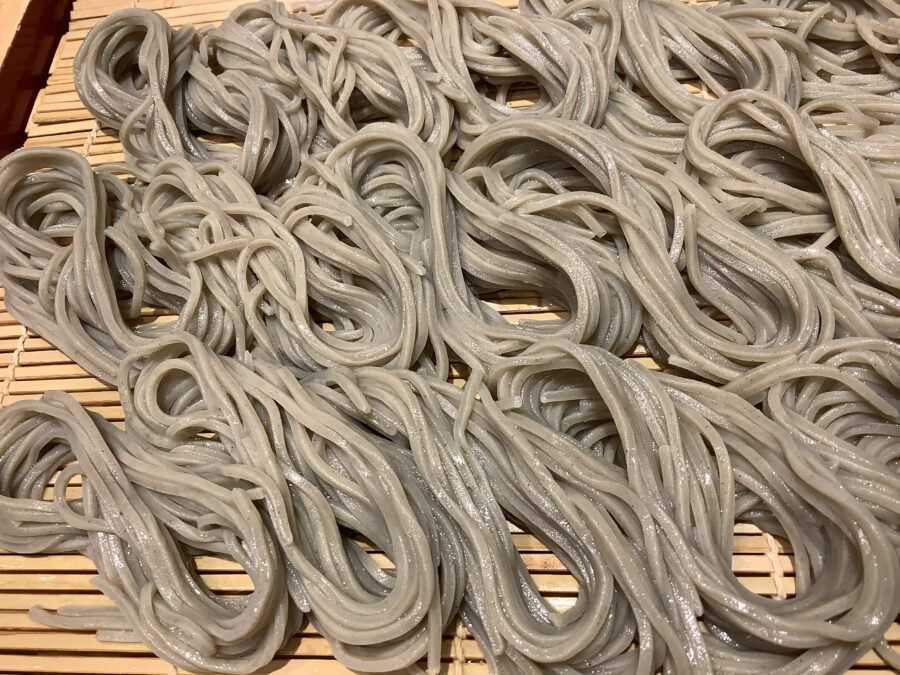
This depends on if the noodles are fresh or not. If you’ve made the noodles fresh, then they can last up to two weeks.
However, that’s the maximum. It’s best to cook and eat your freshly-made noodles within a week. Dried soba noodles, though, are a different story.
If they don’t smell super funky, you should be fine, even if it’s been a few months. Store them in a cool, dark, and dry environment.
What is the Pink Swirly Thing?
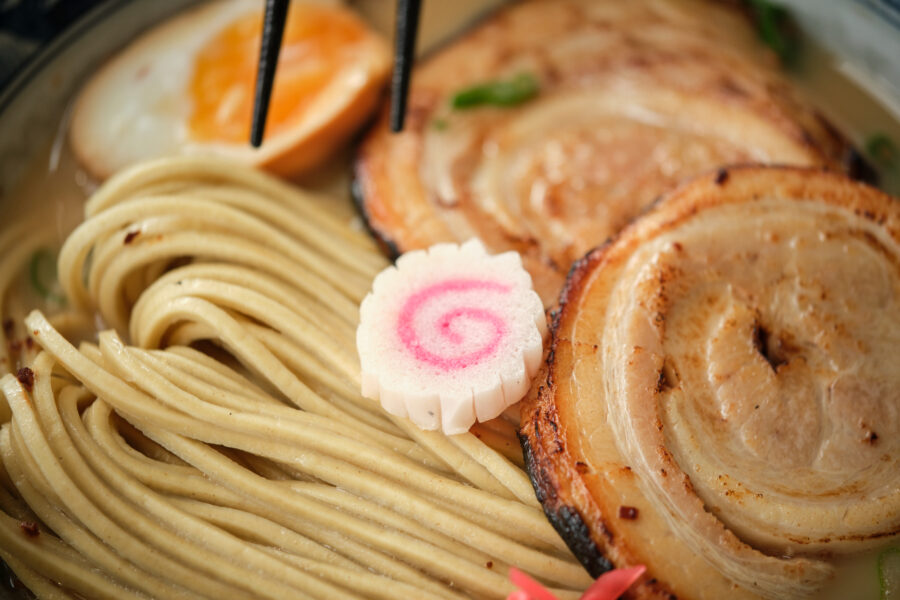
You’ve probably seen them nestled in bowls of ramen. Though they’re more closely associated with ramen, they can also be found in bowls of udon.
They’re actually fish cakes, or narutomaki, in Japanese. If you don’t like fish, don’t worry – the minced fish is mixed with sugar, creating a unique blend of flavors.
Their association with ramen is due, in part, to their relationship with udon. They were first used in udon dishes, before ramen exploded in popularity.
Udon Noodles Taste Bad
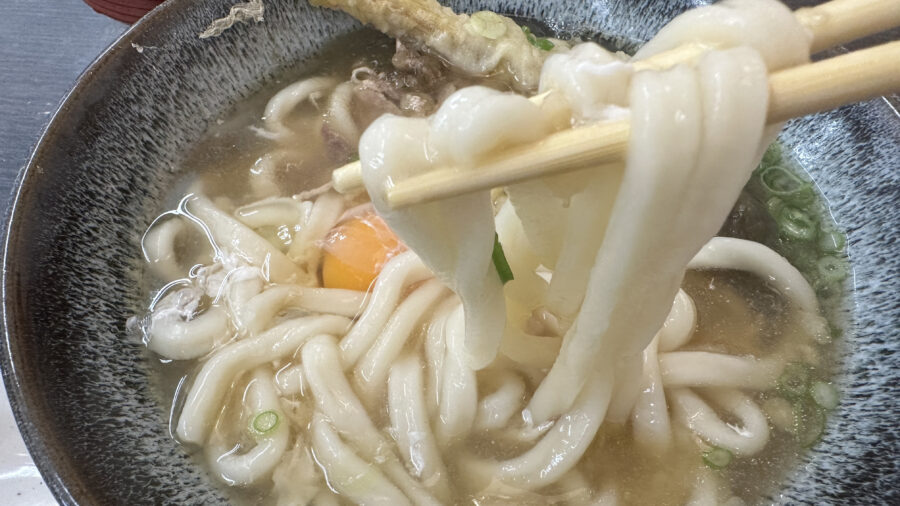
If your udon has a sour aftertaste, they could’ve gone bad. However, this is a common issue with cooking pre-packaged udon noodles, so they could still be edible.
To avoid this altogether, you could stick with buying dried udon noodles in the future. That is, if you’d rather not make them fresh.
You could also try rinsing the noodles after cooking to get rid of the aftertaste. In fact, we recommend you do this first, before completely giving up.
Eating Too Much Udon
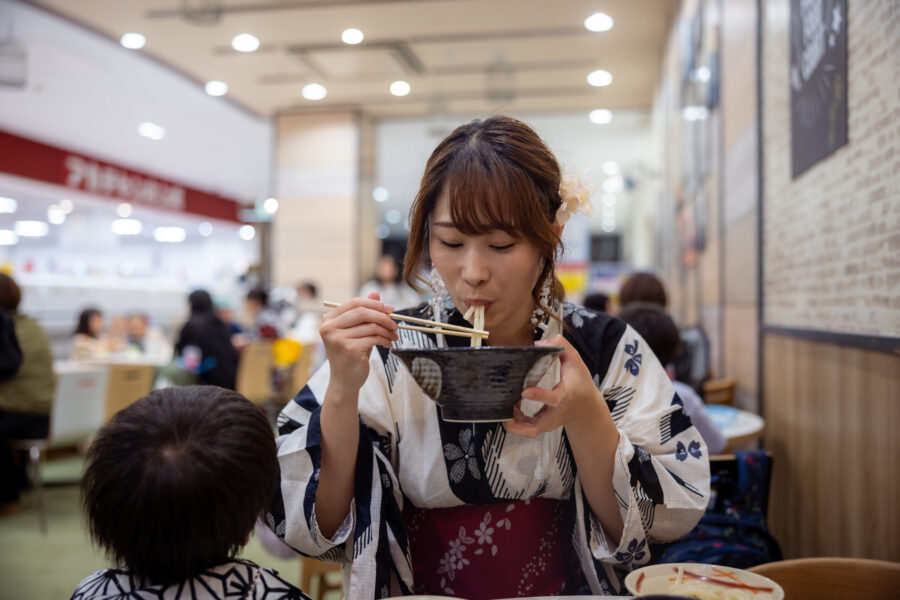
Udon doesn’t have much nutritional value. Still, it doesn’t have many adverse health effects. You won’t be putting yourself at risk if you eat a lot of it.
However, a lot isn’t the same as too much. Eating too much of it can increase your risk of diabetes, though it depends on what kind you’re eating.
Freshly made or dried udon isn’t that bad for you. Instant udon, much like ramen, is a different story. Long story short, it isn’t that healthy.
Which Do You Prefer?
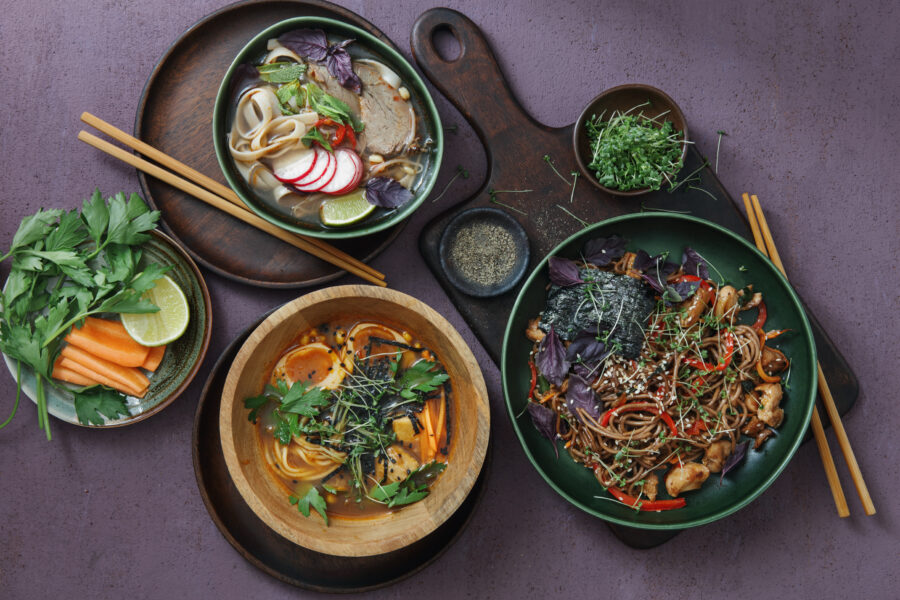
Both noodles are the base for a variety of traditional Japanese dishes. While soba noodles are thin, long, and nutty, udon noodles are thick, short, and plain.
Both are pretty easy to make, and offer a lot in the variety department. Udon does have soba marginally beaten with variety and creativity, though.
However, soba is best for gluten-free folks. Ultimately, udon vs. soba is your choice. Tons of delicious dishes are possible with both – it’s all up to you.

